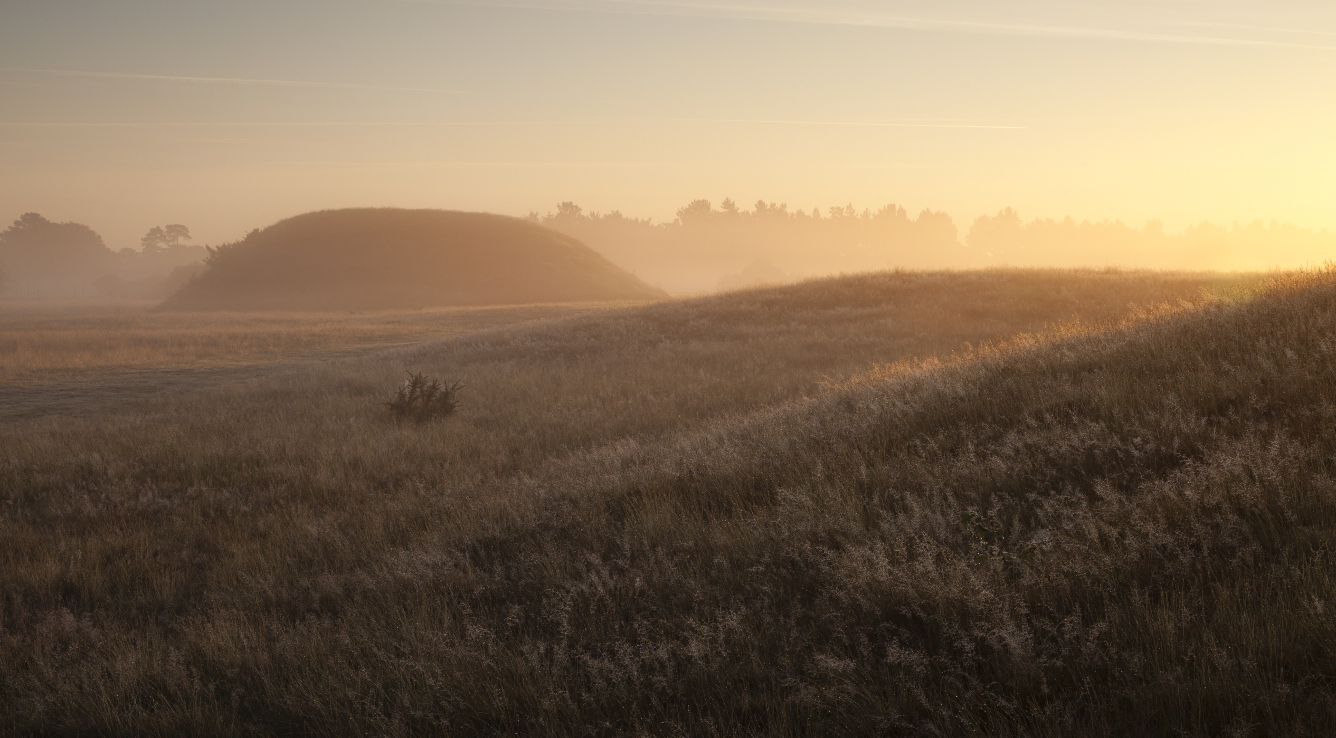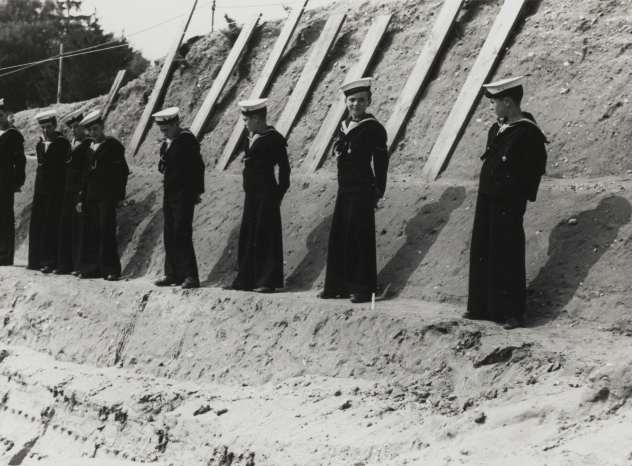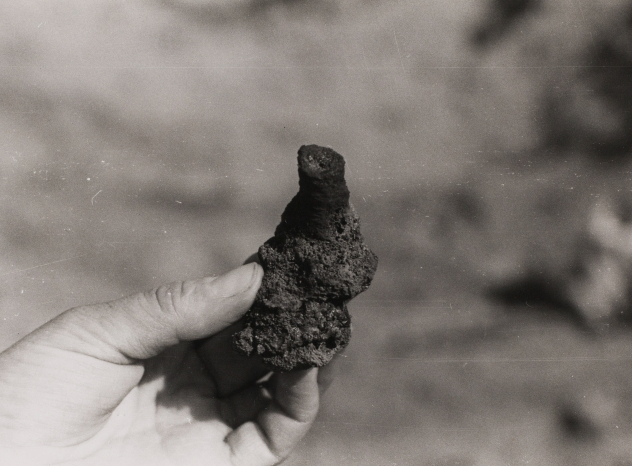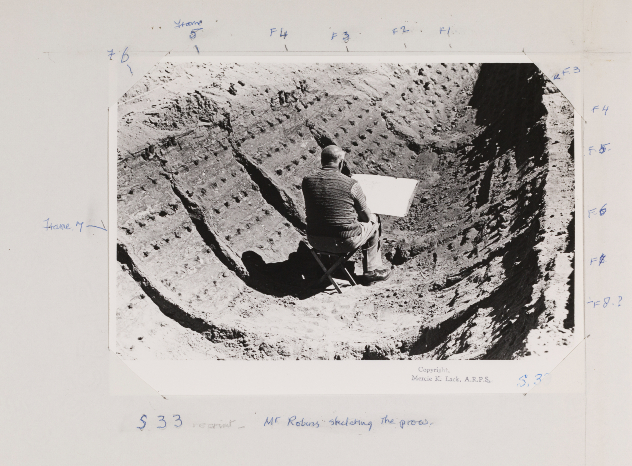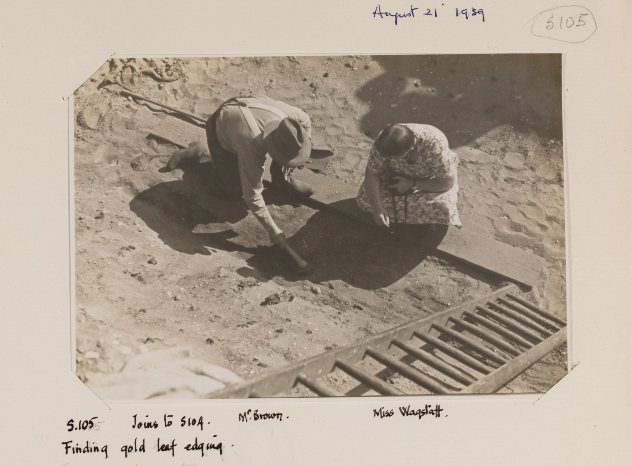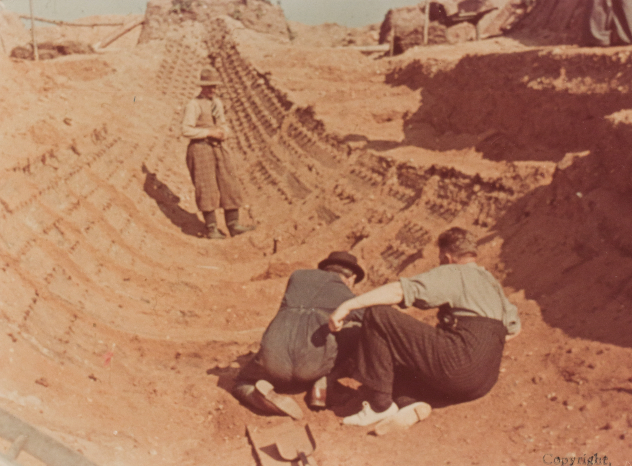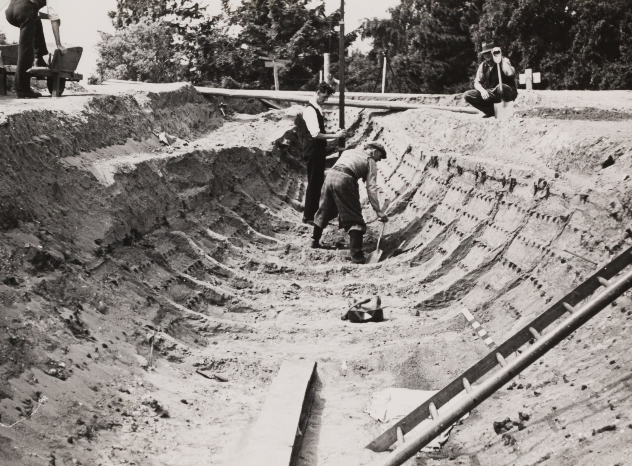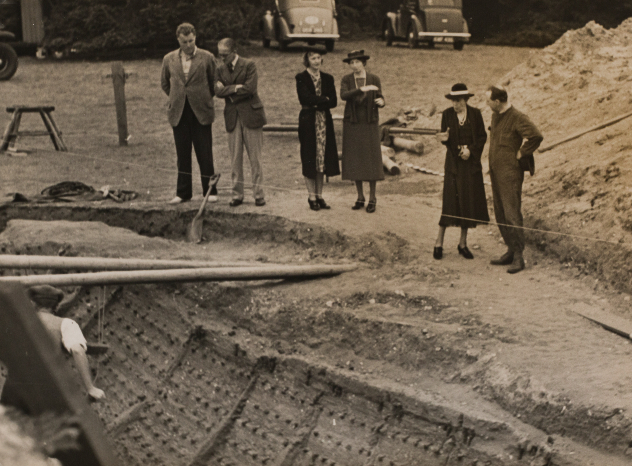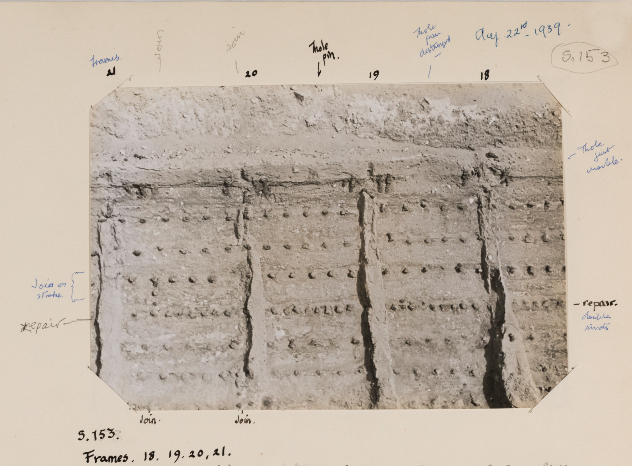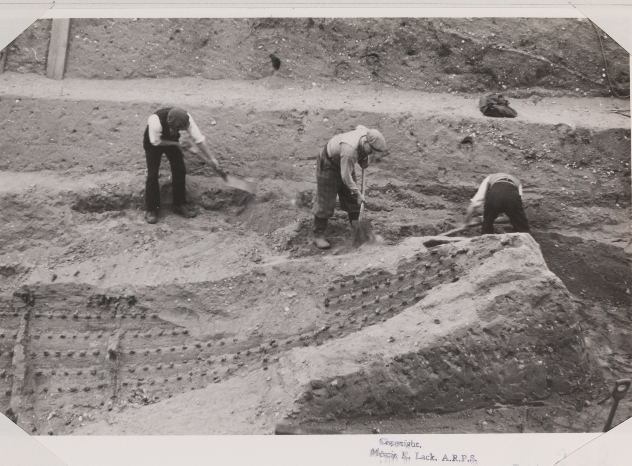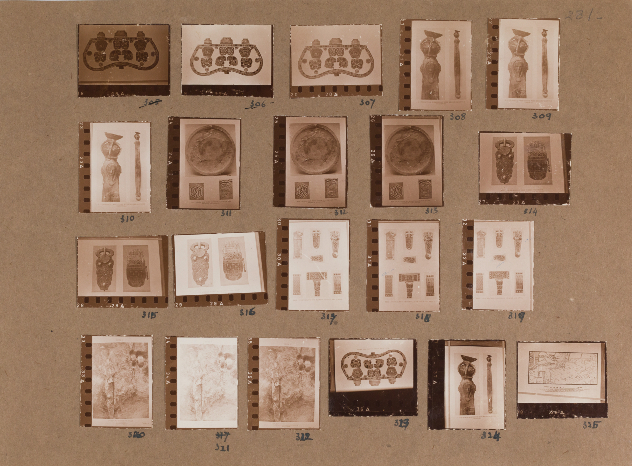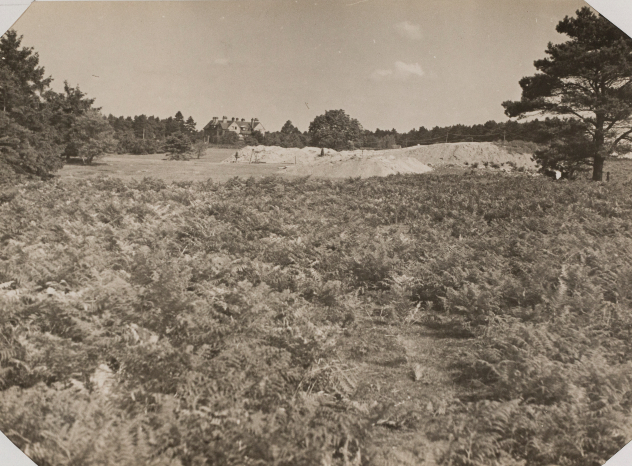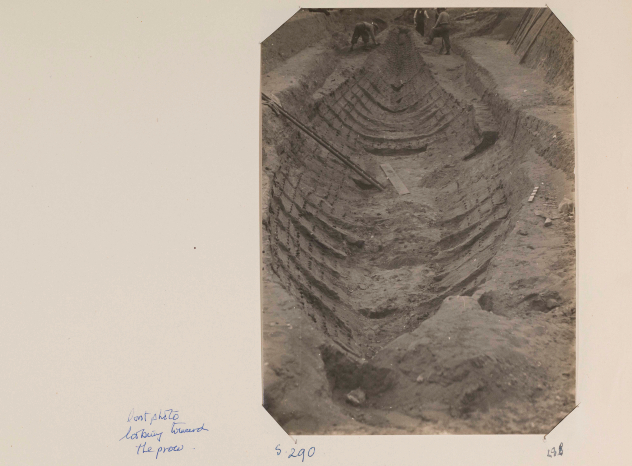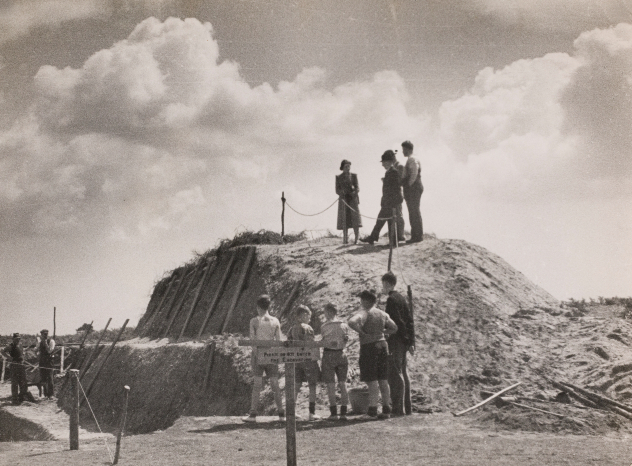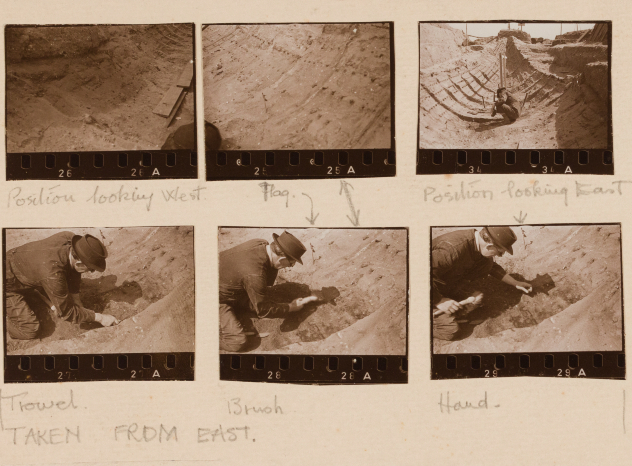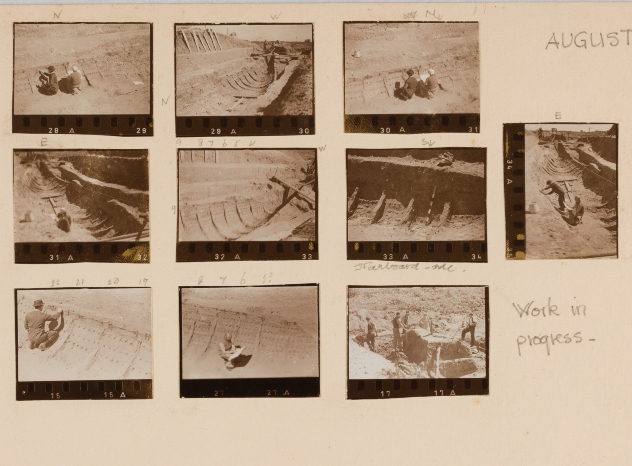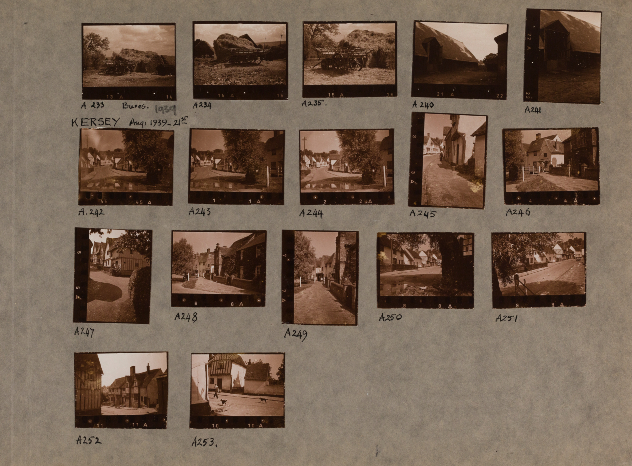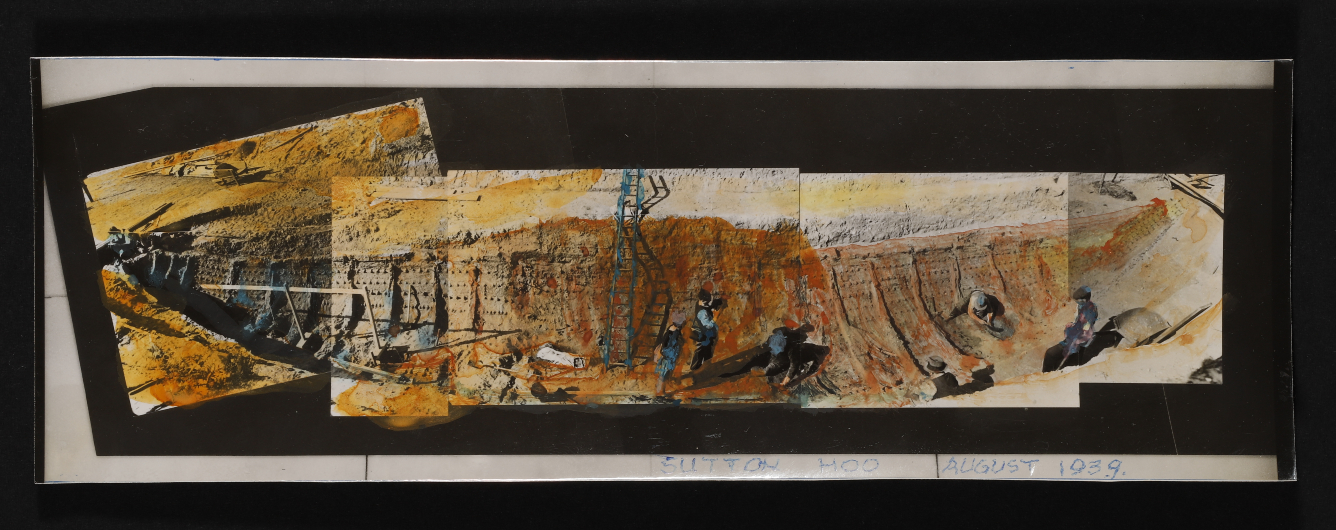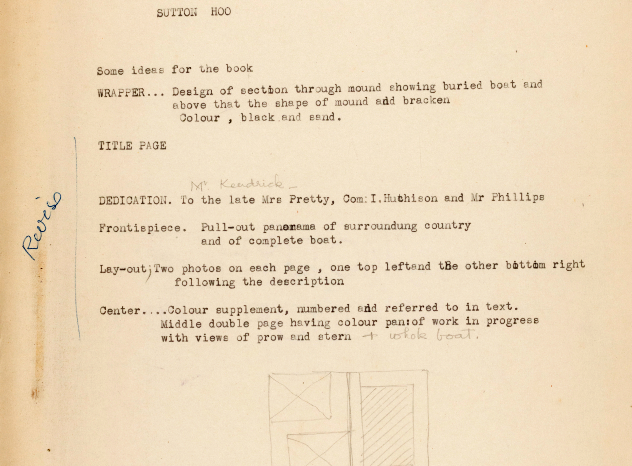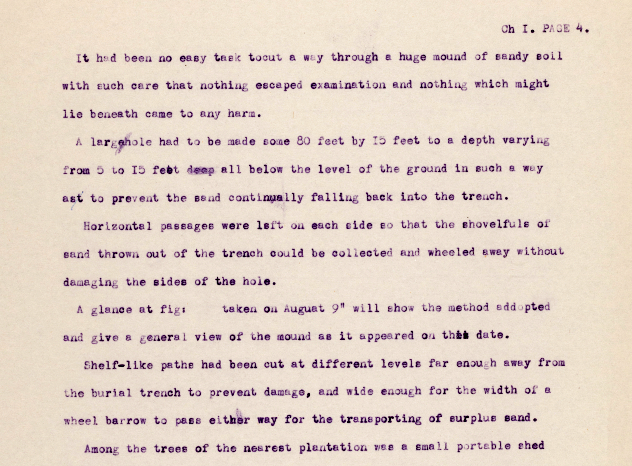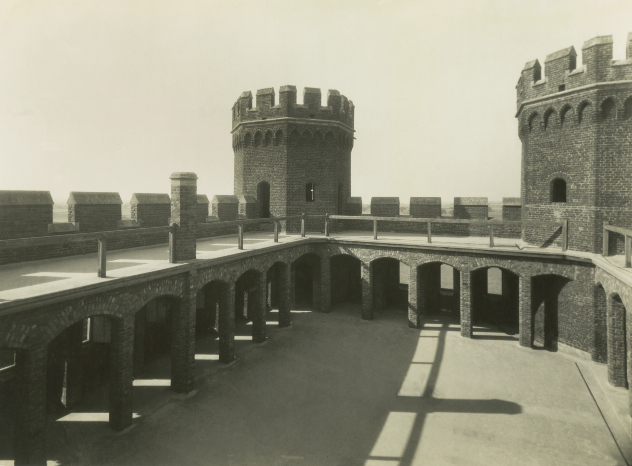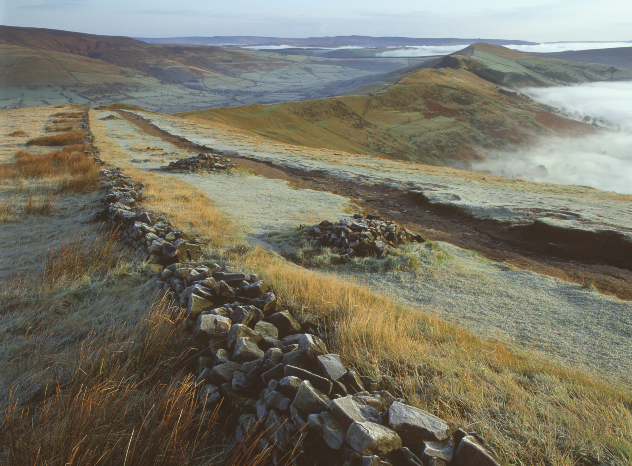In 1939, a thrilling archaeological discovery was made at Sutton Hoo in Suffolk. A 27-metre long Anglo-Saxon ship burial was unearthed, revealing objects crafted from gold, garnet and silver. The finds represent the richest burial ever found in northern Europe, and have helped to change our understanding of Anglo-Saxon life and burial practices.
Sutton Hoo’s Royal Burial Ground contains around eighteen burial mounds dated to the early 7th century and is thought to be the cemetery for the East Anglian royal dynasty, the Wuffings.
Lack and Wagstaff
Shortly after the discovery of the Great Ship Burial and subsequent transfer of the treasure to the British Museum, Mercie Lack (1894–1985) and Barbara Wagstaff (1895–1973) were granted permission to photograph the excavation. Due to the acidity of the soil, the timbers of the ship had rotted away, leaving instead a fossil of a ship, or as Lack described it, a ‘kind of ghost ship’ peppered with rusty iron rivets.
Lack and Wagstaff were present on the site between 8 and 25 August 1939. Between them, they took over 400 photographs, and Lack took a short section of 8mm cine film. In addition to the black and white photographs, Lack and Wagstaff each also obtained a roll of 35mm German Agfa colour slide film, which went briefly on sale in Britain before the outbreak of the war. They are among the earliest surviving original colour photographs of any major archaeological excavation.
Lack and Wagstaff made a truly significant contribution to the photographic and archaeological record, while also capturing the social history of an excavation taking place on the eve of the Second World War. Identifiable in their photographs are archaeologists Basil Brown and Charles Phillips, as well as site visitors including the artist W. P. Robins, a group of naval cadets and Princess Marie Louise.
A set of Lack and Wagstaff’s photographs was generously given to the National Trust by Lack’s great-nephew, Andrew Lack. The collection includes photographic albums meticulously annotated by Lack, black and white loose prints, contact prints and drafts of the beginnings of an unpublished book that Lack was writing on her Sutton Hoo experience.
Conserving and digitising the collection
Between 2018 to 2023, the collection was conserved, catalogued and digitised. In digitising the albums, photographs were taken of each album page, print and accompanying text resulting in over 4,000 images of the collection. There is still work to be done such as enhancing the catalogue entries and transcribing the annotations.
Very few people witnessed the Sutton Hoo ship and its precious cargo emerge from its sandy grave in 1939. Mercie Lack and Barbara Wagstaff helped capture some of these precious moments in time and their photographs can now be enjoyed for generations to come.
